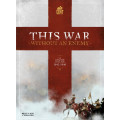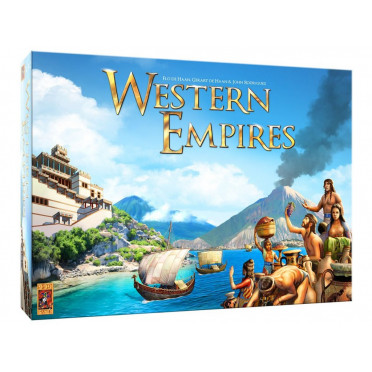Players lead their civilizations as they rise and fall from the Stone Age through the Bronze Age to the late Iron Age.
Although it may seem like it at first glance, Western Empires is not a wargame. Sure, there may be conflicts, but it is more a game about history, culture, trade, development and... calamities. The civilizations involved are all located around the Mediterranean Sea. The Romans, the Egyptians, the Celts and the Minoans. Players develop their own civilization in the areas of arts, crafts, science, civics and religion.
Each player starts their civilization with a single population token, 8000 BC, but it grows and grows over time, and eventually cities can be built. Cities bring wealth and fortune, of course, but also... natural calamities like epidemics, famine or earthquakes, or civil calamities like pirate attacks, slave revolts and civil disorder.
This wealth is expressed in trade maps. The more cities a player has, the more cards he receives. These cards provide both goods and calamities. Trade is the heart of the game. Develop religion, democracy, improve science... 51 different advances can be developed in five different categories.
A player can even build a wonder of the world, or disperse his people all over the map, and gain cultural ascendancy. The player who can best work together, trade or fight for territory, defend his people against nature or enemies like barbarian hordes, and stand the test of time, will eventually win the game.
This game appears in the Tops Games of our players
-
Wargames

View all Tops Games
Copyright © 2025 www.philibertnet.com Legals - Privacy Policy - Cookie Preferences - Sitemap






